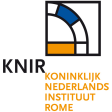Summary
- A territory of 8 sq km was intensively explored in the hinterland of the ancient town of Grumentum by four field walkers in four weeks of fieldwork (survey intensity: 10 days/man per sq km). Two survey areas were selected based on geological and visibility conditions, which were surveyed using different methods. The first area located south of the ancient town of Grumentum corresponds to a large plateau with medium and high visibility conditions, which was intensively and systematically surveyed; the second area is located south-west, is mountainous, covered by wood, characterized by low visibility conditions, and was extensively surveyed targeting only the hill tops. A team composed by one leader and three students walked the two survey areas to identify archaeological sites corresponding to surface concentrations of archaeological material. In total 39 archaeological sites were recorded, manually plotted on topographic maps (1:25,000 and occasionally 1:1,000), and described using both “Site” and “Topographic unit” forms (cf. Ricci 1983, La documentazione scritta nella ricerca archeologica sul territorio: un nuovo sistema di schedatura. archeologia Medievale X, 495-506).
Project Dates
- 1992
Periods
- No period data has been added yet
- 3400 BC
- 2300 BC
- 600 AD
- Field Directors: Gabriele Cifani; Ugo Fusco; Massimiliano Munzi
Other Comments
- This record has been produced by the FASTI Online Survey team
- The survey was designed to identify changes in settlement patterns from the protohistoric times to the Medieval period, and to examine the urban center of Grumentum in relation to the surrounding countryside. The survey aimed at understanding how the town of Grumentum may have been integrated into local commercial and social networks by analyzing diachronic changes in settlement patterns in the suburbium, and the associated population fluctuations, particularly from the pre-Roman to the Imperial period.
Director
-
Director
- Gabriele Cifani




![Edit [ed]](/survey/skins/fastisur/images/plusminus/edit.png)
![View [view]](/survey/skins/fastisur/images/plusminus/view.png)